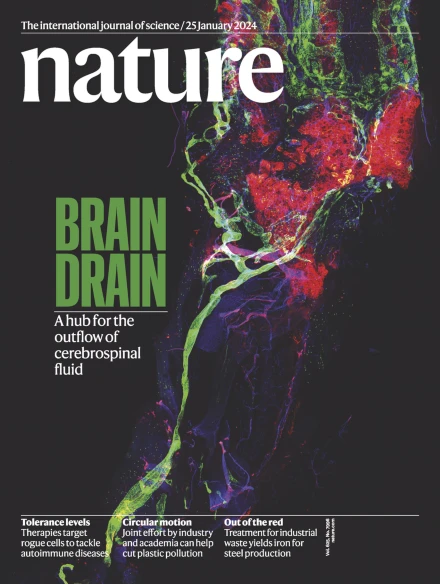Generalizing arene C–H alkylations by radical–radical cross-coupling
IF 48.5
1区 综合性期刊
Q1 MULTIDISCIPLINARY SCIENCES
引用次数: 0
Abstract
The efficient and modular diversification of molecular scaffolds, particularly for the synthesis of diverse molecular libraries, remains a notable challenge in drug optimization campaigns1–3. The late-stage introduction of alkyl fragments is especially desirable due to the high sp3 character and structural versatility of these motifs4. Given their prevalence in molecular frameworks, C(sp2)–H bonds serve as attractive targets for diversification, although this process often requires difficult prefunctionalization or lengthy de novo syntheses. Traditionally, direct alkylations of arenes are achieved by using Friedel–Crafts reaction conditions with strong Brønsted or Lewis acids5,6. However, these methods suffer from poor functional group tolerance and low selectivity, limiting their broad implementation in late-stage functionalization and drug optimization campaigns. Here we report the application of a new strategy for the selective coupling of differently hybridized radical species, which we term ‘dynamic orbital selection’. This mechanistic model overcomes common limitations of Friedel–Crafts alkylations via the in situ formation of two distinct radical species, which are subsequently differentiated by a copper-based catalyst on the basis of their respective binding properties. As a result, we demonstrate here a general and highly modular reaction for the direct alkylation of native arene C–H bonds using abundant and benign alcohols and carboxylic acids as the alkylating agents. Ultimately, this solution overcomes the synthetic challenges associated with the introduction of complex alkyl groups into highly sophisticated drug scaffolds in a late-stage fashion, thereby granting access to vast new chemical space. Based on the generality of the underlying coupling mechanism, ‘dynamic orbital selection’ is expected to be a broadly applicable coupling platform for further challenging transformations involving two distinct radical species. Using the concept of dynamic orbital selection distinct organic radical species can be differentiated, enabling direct coupling of aromatics with alcohols or carboxylic acids.

自由基-自由基交叉偶联的芳烃C - H烷基化
分子支架的高效和模块化多样化,特别是不同分子文库的合成,仍然是药物优化活动中的一个重大挑战。由于这些图案的高sp³特征和结构通用性,后期引入烷基片段是特别可取的鉴于它们在分子框架中的普遍存在,C(sp²)−H键是多样化的有吸引力的目标,尽管这一过程通常需要困难的预功能化或漫长的从头合成。传统上,芳烃的直接烷基化是通过使用强Brønsted或Lewis酸,采用Friedel-Crafts反应条件来实现的。5,6然而,这些方法的功能基耐受性差,选择性低,限制了它们在后期功能化和药物优化运动中的广泛实施。在此,我们报告了一种新策略的应用,用于不同杂交自由基的选择性耦合,我们称之为动态轨道选择。这种机制模式克服了Friedel-Crafts烷基化的常见限制,通过原位形成两种不同的自由基,随后根据其各自的结合特性由铜基催化剂区分。因此,我们在这里展示了一个通用的和高度模块化的反应,用于天然芳烃C−H键的直接烷基化,使用丰富的和良性的醇和羧酸作为烷基化剂。最终,该解决方案克服了在后期将复杂的烷基支架引入高度复杂的药物支架的合成挑战,从而获得了广阔的新化学空间。基于潜在耦合机制的通用性,动态轨道选择有望成为一种广泛适用的耦合平台,用于进一步挑战涉及两种不同自由基的转化。
本文章由计算机程序翻译,如有差异,请以英文原文为准。
求助全文
约1分钟内获得全文
求助全文
来源期刊

Nature
综合性期刊-综合性期刊
CiteScore
90.00
自引率
1.20%
发文量
3652
审稿时长
3 months
期刊介绍:
Nature is a prestigious international journal that publishes peer-reviewed research in various scientific and technological fields. The selection of articles is based on criteria such as originality, importance, interdisciplinary relevance, timeliness, accessibility, elegance, and surprising conclusions. In addition to showcasing significant scientific advances, Nature delivers rapid, authoritative, insightful news, and interpretation of current and upcoming trends impacting science, scientists, and the broader public. The journal serves a dual purpose: firstly, to promptly share noteworthy scientific advances and foster discussions among scientists, and secondly, to ensure the swift dissemination of scientific results globally, emphasizing their significance for knowledge, culture, and daily life.
 求助内容:
求助内容: 应助结果提醒方式:
应助结果提醒方式:


